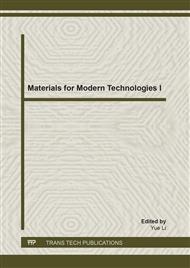p.51
p.57
p.61
p.69
p.75
p.81
p.87
p.95
p.101
Production of Noval Turkish Delight (Lokum) with Fruit Syrups
Abstract:
An old Turkish aphorism tells one to ‘‘eat sweetly and speak sweetly”. Sweets have always been an important component of the Turkish cuisine. The origin of Turkish delight (lokum) dates back to the time of the Ottoman. The beginning of the production of lokum is estimated to be in the 14th and 15th centuries, and its production had reached today’s form in the 19th century. Sour cherry is high in phenolic substances and anthocyanin compounds, which are important for human health. Lokumproduced with sour cherry and black grape syrups has antioxidant activity not been produced yet by adding fruit concentrates. A lokum rich in polyphenol and antioxidant compounds can be produced using with some special fruit concentrates. Lokum is produced by mixing sugar and some water in certain fractions, and by adding fruits or nuts to the mixture. After dissolving the sugar in water and then adding the starch milk, a temperature of about 40°C is set, then 30 g citric acid is added and finally, the cooking time is started. After the mixture started to boil, the steam fan of the boiler is operated. The sour cherry and black grape syrups are added into the mixture could make the product healthier. This mixture is heated for a certain time at a certain temperature in an open vessel or steam jacketed tank with an agitator. Cooking time is changed from 1 to 2 h according to the vessel’s type. Hot lokum fluid is dripped onto a wooden table or steel tray which has some starch on it. Then thelokum is left to ripen for 24 hours at room temperature. Lastly, the lokum samples are manually cut and then going to be packed, then it is marketed.
Info:
Periodical:
Pages:
75-79
Citation:
Online since:
May 2015
Authors:
Keywords:
Price:
Сopyright:
© 2015 Trans Tech Publications Ltd. All Rights Reserved
Share:
Citation:


